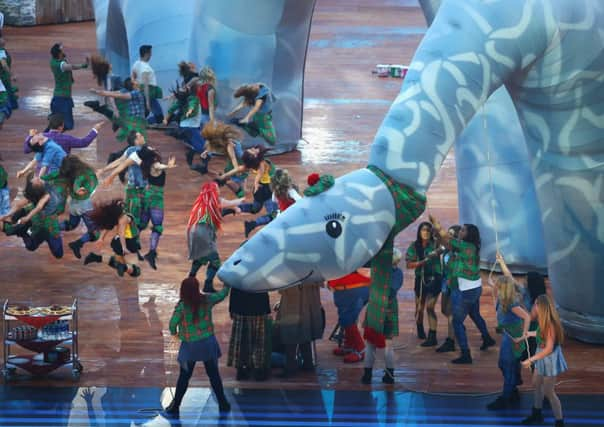Dani Garavelli: Scotland can let Nessie retire


At least Dippy is a plaster-cast copy of something that once existed. It is tangible; children can learn from it, have their photographs taken next to it, whereas Nessie is a trick of the light, a shadow on the water conjured up by people with a vested interest in sustaining the illusion. With our rugged peaks, our golden eagles, our rock-pools and our buzzing cities, is a formless, fictitious sea creature, which isn’t even rooted in ancient folklore, really the best we have to offer overseas visitors?
Once upon a time, perhaps, you could understand our reliance on the Loch Ness monster. Scotland wasn’t so well-known globally. At least Nessie had pulling power. She spawned an industry of semi-scientific “hunters”, with their boats and sonar equipment, and documentary film-makers. Visitors, especially from the US, were aware of the legend and bought into it. They trekked (still trek) here in their thousands on the trail of something imaginary. And shrewd hoteliers, businesses and even newspapers colluded in the hoax, treating every new “sighting” as the one which could potentially solve the “mystery”.
Advertisement
Hide AdAdvertisement
Hide AdTourism chiefs knew the benefits were transitory and double-edged. Local businessmen argued over how best to milk their biggest asset, with some angry the visitor centre was marketing her as a “myth”, but the tourists turned a place of great beauty into a theme park. Once they had been through the exhibition, had their photographs taken and bought some tat, they moved on without learning much more about the area.
Today, however, Scotland is no longer famous only for its tartan, its shortbread and its monster. Last year, we hosted the Commonwealth Games, the Ryder Cup and our regular Edinburgh Festival, and staged a two-day event to mark the 700th anniversary of the Battle of Bannockburn. Hundreds of foreign journalists who came to our shores to cover the referendum encountered a modern, politically engaged country with thriving industrial and cultural centres. For an entire year, the world was gazing into our shop window. Isn’t it time we stopped depending on Nessie to promote our wares?
Even if we have to look backwards, there are better ways of selling Scotland. Figures out last week suggested Outlander – the US TV series set (mostly) in the Highlands – had helped deliver a £40m bonus to the Scottish film industry. But it has also boosted tourism.
Jamie and Claire Fraser (the heroes) may be made up, just like Nessie, but their lives are rooted in real events. Visitors who come on their trail visit Outlander-related sites all over the country, soaking up the history and landscape, and evangelising about it when they return home.
But we also have so much to offer in the here and now. There are our golf courses, of course, and our textile industry, but what about our music, cuisine and architecture? For a country of just over five million people, we are almost obscenely blessed with talented bands: Chvrches, The Twilight Sad, Frightened Rabbit, Twin Atlantic, Young Fathers, and with venues at which to watch them perform. And, though there are still some eateries where opening hours are restricted, and the food and service lacking, we have more than our fair share of top-notch restaurants. Surely, after decades of Tartan Days and Weeks, something beyond the kilts and the kailyard, something of modern Scottish cultural life, must have penetrated the American consciousness.
There are innovative ways to market our landscape too. What is more likely to inspire a visit to Skye than Danny MacAskill’s breathtaking journey by mountain bike across the Cuillin to the top of the Inaccessible Pinnacle, where he stands silhouetted against the sky? And what about adventure holidays – sailing, white water rafting, canyoning and cliff jumping – available at places like Nae Limits in Perthshire and the Galloway Activity Centre at Loch Ken? Surely they would attract the thrill-seekers.
There’s no need to do away with the old symbols altogether, but the Commonwealth Games Opening Ceremony – with its dancing Tunnock’s teacakes and Scottie dogs – showed how you could give stereotypes a twist and turn them into something contemporary. And OK, yes, a giant, inflatable Nessie did make an appearance too, but only as a joke, a parody of how others see us and proof that we know how to laugh at ourselves.
Given Nessie appears in every list of the world’s top mysteries – alongside the Bermuda Triangle and the Roswell incident – it is unlikely we will ever be able to shake her off completely. Since she gives pleasure to so many, perhaps we wouldn’t want to, any more than we would want to ditch the bagpipes because we find their drone annoying. Still, with so much else to showcase, we should probably take our lead from the Natural History Museum – and move the Loch Ness monster to the back of the closet to make way for better, brighter, more interesting exhibits. «